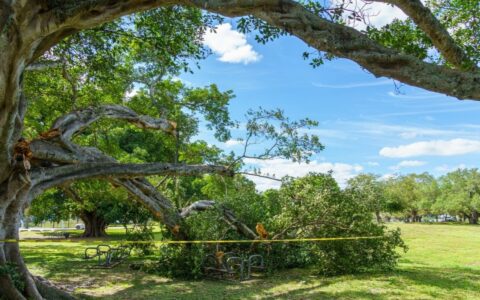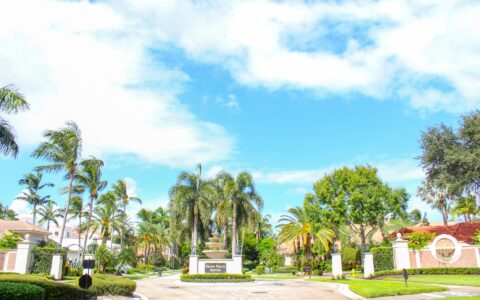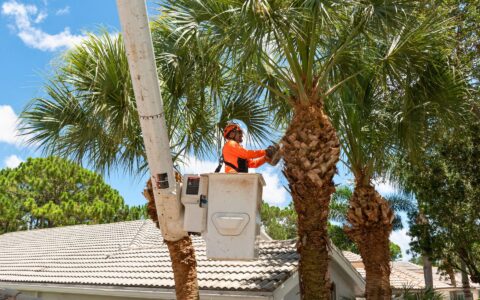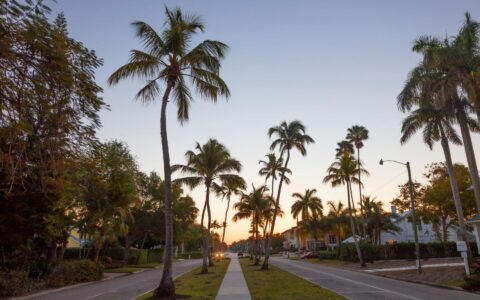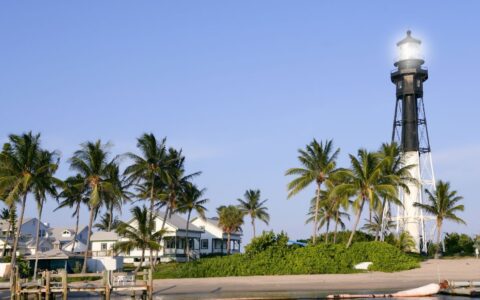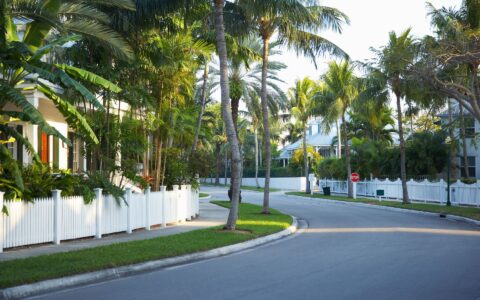It’s a strange sight; half of the tree is green and healthy but the other half is brown and looks dead. Or most of the leaf edges are brown and crispy but the rest of the tree looks healthy. What’s going on? Here in South Florida, the likely cause is salt burn caused by wind-blown sea spray. Salt spray injury is particularly prevalent in trees near the ocean, but wind-borne salt can travel up to 1/2 a mile inland when blown by strong winds.
In this article, you’ll learn:
- how salt spray harms trees,
- what salt spray damage looks like on various types of trees,
- how it happens (and why it doesn’t happen more often),
- which trees are more resistant to this kind of damage,
- what you can do to prevent leaf scorch from sea salt, and
- how to help your trees if they’ve been damaged by wind-blown salt.
FAQs About Salt Spray Injury to Trees
What is salt spray?
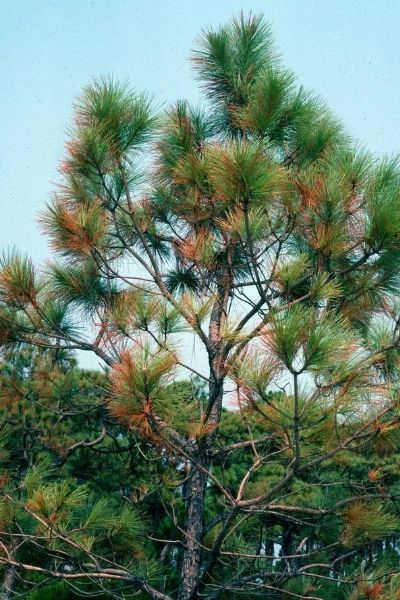
Loblolly pine with salt burn damage. Photo courtsey of John Ruter, University of Georgia, Bugwood.org
Salt spray is made up of millions of tiny droplets of salty seawater splashed into the air by waves breaking onshore. The droplets are created by the force of crashing waves and are picked up and carried inland by the wind.
Wind-borne salt spray droplets are blown into tree canopies or dropped onto foliage. As wind encounters obstacles, such as buildings and trees, it slows and the air-borne particles fall onto the ground and surfaces below. (These can be particles of water, grains of pollen, dust, smoke, and even insects).
While we normally associate salt spray with beaches, strong windstorms can carry salt spray up to half a mile inland. And areas we don’t associate with tropical weather, such as Long Island, NY, can also be hit with damaging salt spray carried by tropical storms.
How does salt spray harm your trees?
When saltwater droplets land on your trees’ leaves, the water quickly evaporates. What’s left is salt, in its mineral form, along with other minerals such as magnesium, calcium, and potassium.
Salt left on foliage will burn leaf tissue and leaf edges will turn brown and die. Eventually, the entire plant can die as it loses more and more leaves.
NOTE: This foliage damage is similar to what’s caused by salt in the soil (such as after flooding). In that case, leaves take up salty water through their roots and expel it through their leaf pores. The resulting buildup of salt burns and kills leaf tissue.
What does salt spray injury look like?
Whether you have evergreen or deciduous trees, you’ll first notice salt spray injury on your trees’ leaves. Often, it looks similar to the symptoms of drought damage.
Depending on the severity of the salt spray damage, you’ll see:
- leaves or needles with brown, dead tips and edges,
- entire leaves (or needles) that look burned and brown,
- twigs and small branches dying from the tips.
Some trees will drop damaged leaves quickly, while others hold on to their leaves longer. When damaged leaves hang on, they may become more shredded or torn from wind damage.
You may see trees with crowns that are partially damaged. Often, the side that receives the most wind is covered with browned and dying leaves, but the sheltered side is a normal green.
What trees are resistant to salt burn and salt spray damage?
Salt spray can burn leaves on all trees, but some species are more susceptible than others. Pines and other evergreens are particularly vulnerable to salt injury.
The best way to avoid the heartbreak of salt injury in your garden is to choose resilient species.
Trees in south Florida that are most tolerant of salt (both in the soil, such as from flooding, and wind-borne salt spray) include:
- Our state’s iconic live oak (Querus virginiana)
- Southern Red Cedar (Juniperus virginiana var silicicola)
- Japanese Red Pine (Pinus thunbergia)
- Redbay (Persea borbonia)
- Florida Soapberry (Sapindus saponaria)
- Mangroves: Red mangrove (Rhizophora mangle), black mangrove (Avicennia germinans), and white mangrove (Laguncularia racemose).
Some common palms are also salt-tolerant, including:
- Cabbage palm (Sabal palmetto)
- Saw palmetto (Serenoa repens)
- Washington or fan palm (Washingtonia robusta)
If you want to learn more about salt-tolerant plant species for South Florida, check out this publication from the University of Florida.
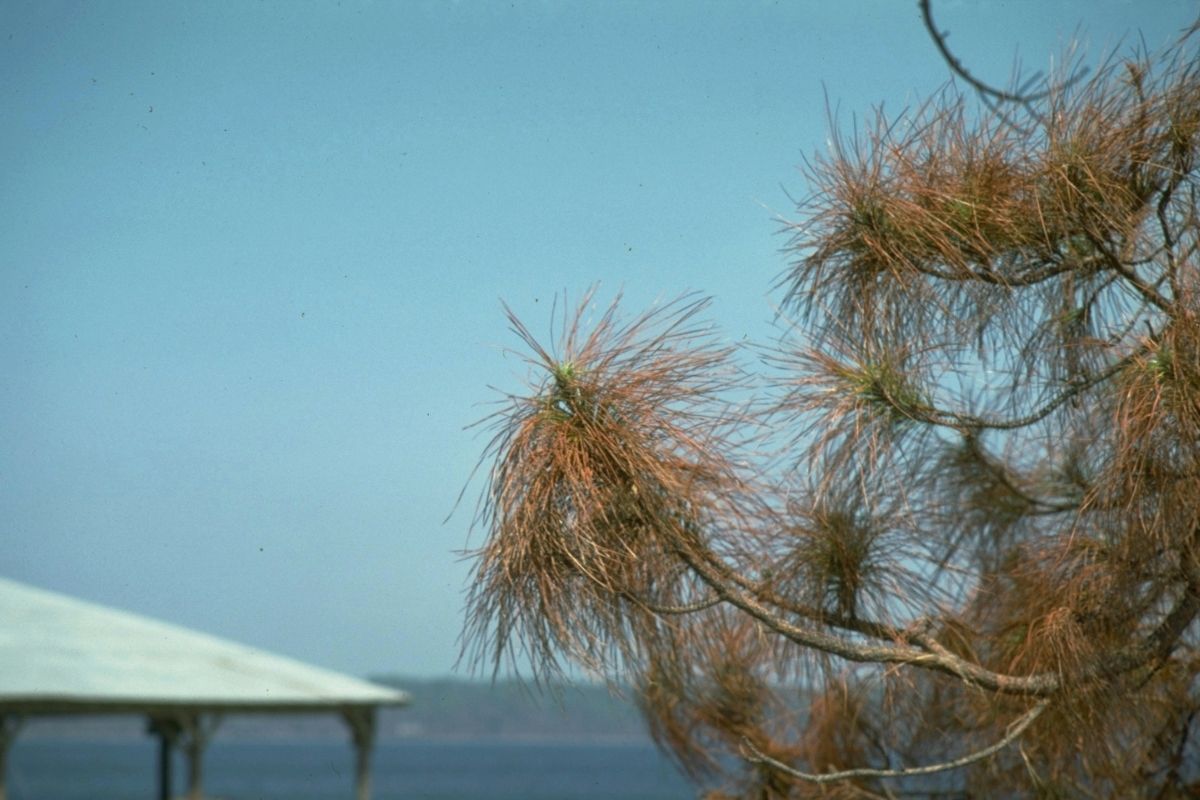
Photo courtesy of Paul A. Mistretta, USDA Forest Service, Bugwood.org
Why aren’t my trees damaged by salt burn all the time?
While wind and waves occur daily, they don’t always cause salt spray damage. Both waves and winds have to be strong and persistent enough to carry damaging loads of salt spray.
We often get strong winds in South Florida during hurricane season. But, when strong ocean waves and winds are accompanied by heavy rain, salt spray is diluted or washed away. As a result, you won’t see salt damage on your trees. Heavy rains also dilute and wash away salt buildup in soils that have been inundated by saltwater from flooding or high tides.
How can I help my trees that have salt spray injury?
Water the leaves and roots
The best way to help your salt-scorched trees is to remove the accumulated salt as soon as you can. If you’ve had a windstorm that’s blown salt spray onto your shrubs and trees, wash off the salt with a garden hose. For larger trees, you’ll need a tree service with a large commercial sprayer to reach the upper branches. Be sure to wait till the wind dies down before spraying water or you’ll be drenched, too!
Irrigation during dry periods will help keep your trees vigorous so they can grow new leaves to replace salt-damaged ones. Heavy irrigation, or flooding the area with fresh water, can wash out salt from your soil. This is important to do if you’ve experienced saltwater intrusion from flooding or extreme tides.
Fertilize lightly to stimulate new growth
Gentle fertilizing will also encourage healthy new leaf growth. Be sure to use a low-salt fertilizer to avoid compounding the problem!
And remember that a tree that’s been damaged by salt burn and salt spray will be stressed from leaf damage and leaf loss. When fertilizing a stressed tree, you don’t want to wallop it with a heavy dose that stimulates more growth than the tree can handle.
Evaluation your trees
If your trees have significant salt damage (which often goes along with storm damage), they may need professional pruning. This will remove damaged branches and open up your tree’s crown to encourage new growth.
Sometimes we find that a salt-damaged tree can’t be saved, even after pruning, irrigating, and fertilizing. In these cases, we recommend removing the tree and replacing it with a more salt-tolerant variety. We don’t like taking down prized and valued trees, but when a dying tree becomes a hazard it’s important to protect life and property.
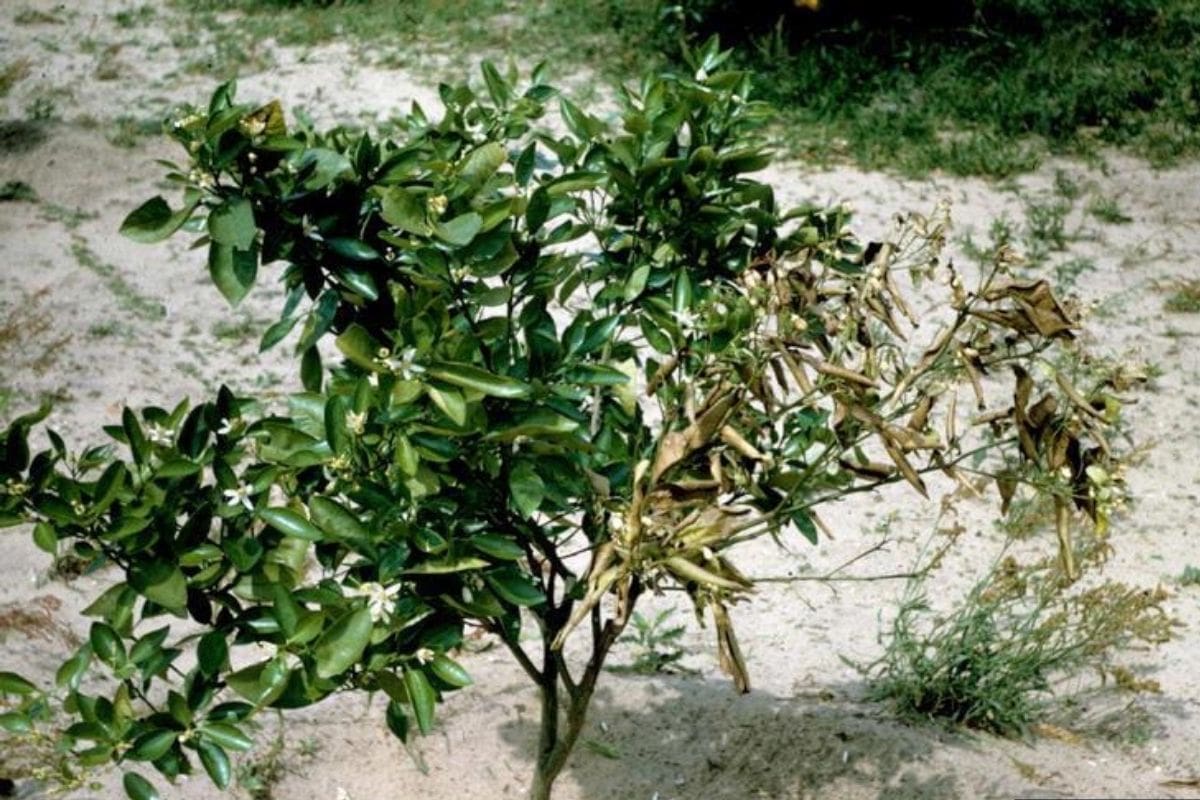
High soluble salt in shrubs. Photo courtesy of Florida Division of Plant Industry , Florida Department of Agriculture and Consumer Services, Bugwood.org
How can I prevent salt burn to trees?
If you know a storm is coming or if strong inland winds are predicted, you can wrap vulnerable plants in burlap or other breathable material that will prevent salt spray from coating the leaves and branches. Obviously, that’s not always possible or practical, especially for larger shrubs and trees.
Other than using physical barriers, the best defense is to make a resilient garden filled with native and salt-tolerant plants and trees. When choosing the trees for your South Florida landscape, consider how close you are to the ocean and whether your yard gets hit by salty winds.
Good landscape design can also help prevent salt spray damage to vulnerable plants. For example, a protective line or group of salt-tolerant trees can act as a sheltering wall and will protect smaller and less salt-tolerant plants from salt injury.
Other ways to give your plants and trees the defenses they need to re-grow new leaves after salt damage include:
- regular irrigation to encourage deep, healthy roots,
- ensuring that the soil has enough organic matter and nutrients for your trees, shrubs, and landscape plants, and
- adding a layer of organic mulch to protect the soil.
We Can Help
Salt spray damage is not only unsightly, it can also kill your valuable trees and landscape shrubs. If you suspect your trees are suffering from salt injury, it’s important to identify the problem quickly so you can begin mitigation efforts. Our Certified Arborists can diagnose the problem and recommend the best way to save your plants. All of our professional Tree Health Solutions are customized to address the specific issues your trees are facing, giving them the best chance of success.
And if your trees need some corrective pruning after storm damage, or if you’re looking to add new, salt-tolerant trees to your garden, we’re here to lend a hand too.
We’re tree experts and our certified arborists and skilled landscape crews can handle any size job. Give us a call!
Call Sherlock for quality tree services
Whether you're looking for specific tree care services, such as palm trimming, tree removal, or disease treatments, or would like one of our Arborists to examine your trees to identify any issues and recommend options, we're always here for you! Just give us a call at 954-788-4000 to set up an appointment.
SEE MORE ARTICLES
Looking for more?
We've got you covered with a monthly newsletter full of tips, resources, updates, how-to's, and other helpful information about trees and landscapes in South Florida!


